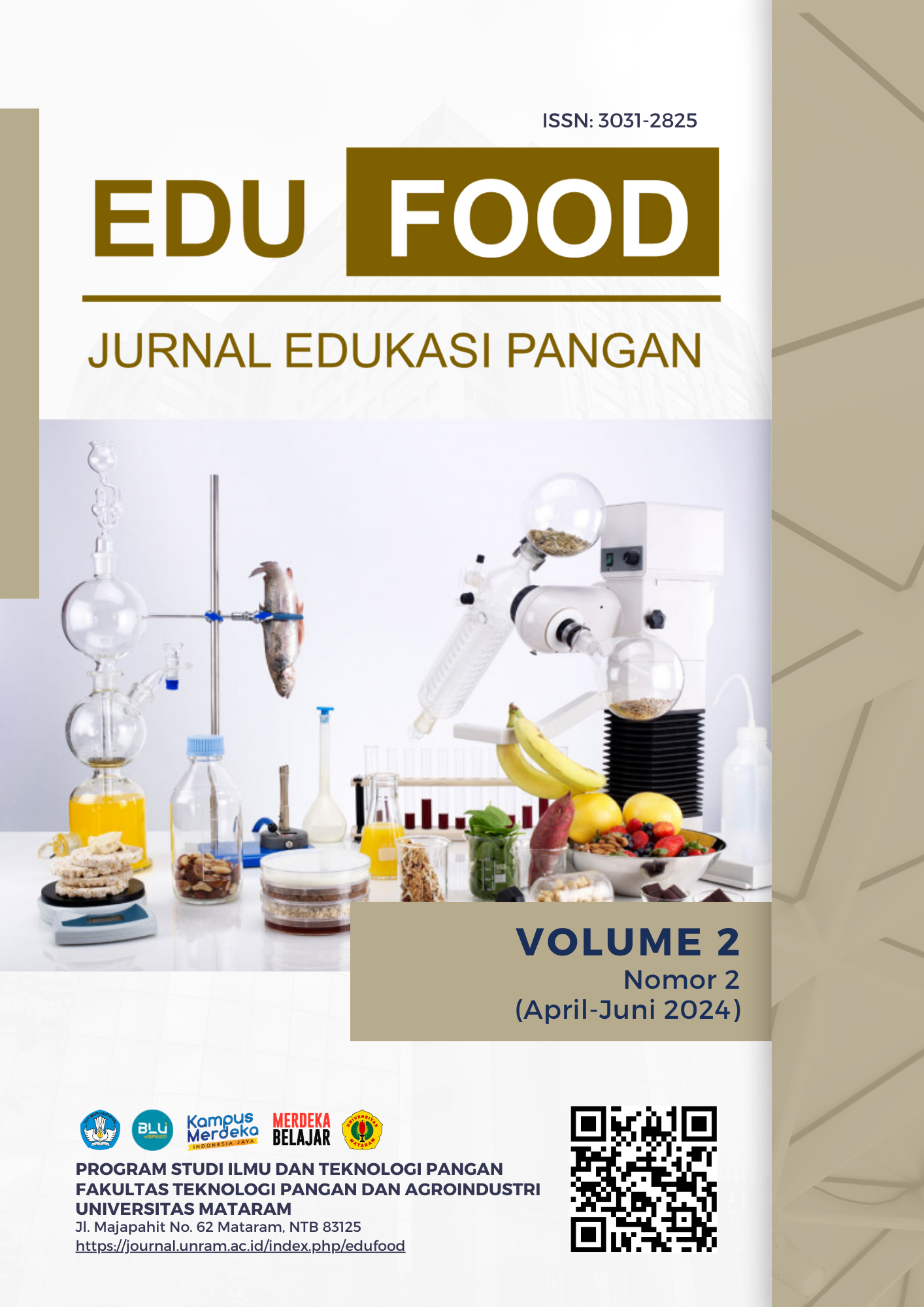THE EFFECT OF GLUCOMANNAN PORANG (Amorphophallus muelleri) FLOUR CONCENTRATION ON THE QUALITY OF WHITE OYSTER MUSHROOM (Pleurotus ostreatus) NUGGETS AS AN ALTERNATIVE VEGETABLE FOOD
Keywords:
Nuggets, oyster mushrooms, porang glucomannan flourAbstract
This aims of this study was to determine the effect of glucomannan porang flour on the quality of white oyster mushroom nuggets as an alternative to vegetable food. This study used an experimental method of Completely Randomized Design (CRD) with a single factor, namely the concentration of glucomannan porang flour including 0%, 5%, 10%, 15%, and 20%. Parameters observed were chemical characteristics (moisture content, ash content, protein content, and fiber content), physical characteristics (texture (N) and color), and organoleptic characteristics by the hedonic method and scoring (scent, taste, and texture). Data obtained from the observation were analyzed by the Analysis of Variance (ANOVA) at a significance level of 5% using Co-stat Software. If the results are significantly different, further test was carried out with the Honest Significant Difference (HSD) test at the same significance level. The results showed that the concentration of glucomannan porang flour had a significantly different effects on the moisture content, ash content, protein content, fiber content, texture (N), taste and texture (hedonic and scoring), but not significantly different on the value of L ( lightness), oHue value, and scent (hedonic and scoring). White oyster mushroom nuggets with the concentration of 5% glucomannan porang flour was the best treatment with a water content of 59.06%; ash content of 2.84%; protein content of 9.18%; and fiber content of 17.69%. Meanwhile, based on the results of organoleptic tests including scent, taste, and texture was the treatment of 0% glucomannan porang flour were the rather preferred by the panelists.


